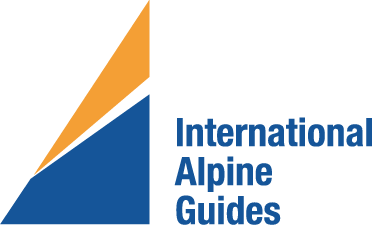The Importance of Taking an Avalanche Course
/If you want to venture into the backcountry in the winter whether on skis, split. board, snow machine or snowshoes it is crucial to have the proper avalanche training to keep you safe. You’ve probably heard that before, but let’s dive into why you should have avalanche safety training if you plan to travel in or even near avalanche terrain.
First, there’s the obvious…how to rescue a partner who has been caught in an avalanche. While avalanche rescue is crucial training that everyone needs to be dialed in on, there is more. Much more. With somewhere over 50% of avalanche fatalities being from trauma and not lack of oxygen, knowing how to avoid getting caught in an avalanche is more important than knowing how to conduct an avalanche rescue.
Skier caught in avalanche in alaska
Identifying what is avalanche terrain is the first step. Perhaps you just want to avoid any areas where an avalanche can affect you. Well, it stands to reason that you need to know what that is and it may not always be obvious to the untrained eye. You could be standing on flat terrain and get caught in an avalanche if you are not aware of where you are. Maybe you are in a runout zone and had no idea. Perhaps you want to ski or board steeper terrain, but how steep is steep enough for an avalanche starting zone? An avalanche course can help you answer this.
When is it safer to travel on or near steeper avalanche slopes and when should they be avoided? There are many, many variables to this question. Weather, snowpack structure and composition, snow science and method of travel can all come into play. Evaluating the snow pack is key factor in making good judgment calls and taking an avalanche course can help you make them.
How to actually travel safely while in or near avalanche terrain. This is something that many people new to the backcountry can overlook and can be one of the bigger eye openers during their first avalanche course. This includes things such as safe uphill and downhill navigation and terrain selection. It also includes group dynamics, judgement, heuristics and simple rules to live by in the backcountry. It is in this area than perhaps most avalanche accidents occur.
Probing training for a buried skier
And let’s not forget planning. Avalanche safety starts in the living room or coffee house. You must know how to make a plan for the day based on many factors and information such as weather and local avalanche forecasts. And you must know how to stick to that plan. Avalanche courses will help you decipher all that information and come up with a solid and safe plan for the day.
Now circling back to avalanche rescue. Avalanche companion rescue using avalanche transceiver with probe and shovel is the fail safe. You’ve done your best to stay safe while traveling in avalanche terrain but someone has been caught in an avalanche and now you need to rescue them. This is a skill that must be learned and practiced again and again. What if your friend is suddenly buried in an avalanche? How do you think your mental state will be? These are skills that must be ingrained so as not to be affected by the immediate stress of the situation. Professional training here is key. An avalanche course and even better, a full avalanche rescue course, will show you the rescue skills you need to have dialed if that situation is ever thrown upon you.
Types of recreational avalanche courses.
Avalanche Level 1
This is the best place to begin. It gives you all the fundamentals of the above-mentioned skills and knowledge as well as avalanche rescue training. This is the avalanche course everyone should take if they plan on skiing or boarding the backcountry.
Avalanche Rescue Course
A stand alone course that can be taken prior to taking an avalanche 1 course but is usually best to be taken after the level 1. It dives deeper into avalanche beacon rescue including multi burial scenarios. It also covers other rescue skills such as a rescue snow shelter and elements of evacuation.
Avalanche Refresher Course
For those that have taken an avalanche course but its been a while. Not an official avalanche course and it has not certification but it is very good recurrent avalanche training
Avalanche Level 2 Course
The highest level avalanche course for recreational backcountry travelers. It dives a bit more deeply into snow science and documenting snow pits as well as how to lead groups through avalanche terrain. A great course for more serious backcountry skiers and boarders and for those who tend to lead their friends on more serious tours.
Avalanche beacon rescue training
Professional Level Courses:
Pro 1 Avalanche Course
Essential training for people who work professionally in avalanche terrain such as mountain guides, ski patrollers and highway department workers
Pro 2 Avalanche Course
A higher level of professional training for more senior level guides and patrollers and highway workers who do avalanche mitigation.
International Alpine Guides and our California division California Alpine Guides teaches the highly regarded American Avalanche Institute curriculum, the nation’s oldest avalanche curriculum provider. We offer avalanche courses in both Lake Tahoe and Mammoth Lakes and we have been doing so for over 40 years. Literally thousands of backcountry skiers and boarders have learned avalanche safety through us and we hope to see you on a course this winter!









